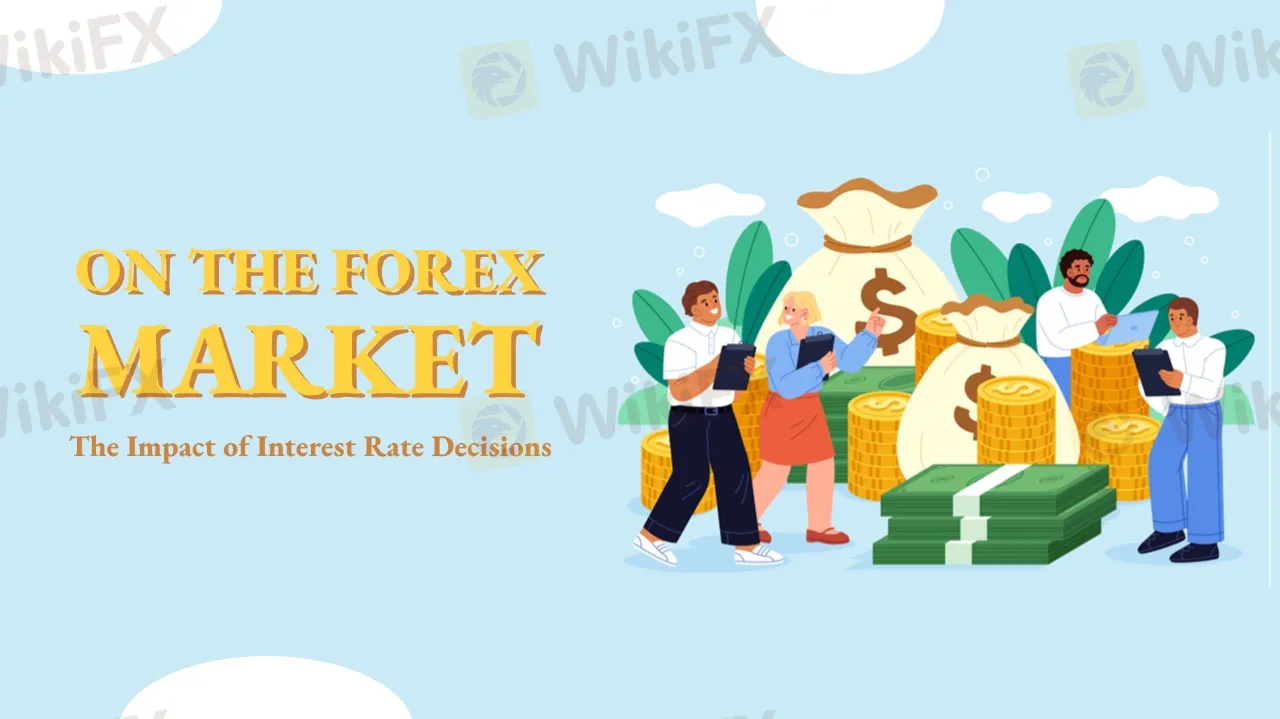简体中文
繁體中文
English
Pусский
日本語
ภาษาไทย
Tiếng Việt
Bahasa Indonesia
Español
हिन्दी
Filippiiniläinen
Français
Deutsch
Português
Türkçe
한국어
العربية
The Impact of Interest Rate Decisions on the Forex Market
Abstract:Interest rate changes determine currency attractiveness, influencing capital flows and exchange rate trends. Understanding this mechanism helps investors navigate the forex market effectively.

Interest rates are a key indicator of capital costs, affecting borrowing expenses and savings returns. In the forex market, investors seek higher yields, meaning capital often flows to countries with higher interest rates. For instance, in the early 2000s, Australia maintained high interest rates, making the Australian dollar a preferred currency for forex traders. Conversely, low interest rates usually lead to capital outflows, putting pressure on the currency. A notable example is the U.S. Federal Reserve lowering rates to near zero in 2020, causing the U.S. dollar to weaken.
How Do Interest Rates Influence the Market?
Interest rate decisions impact both short-term exchange rate fluctuations and long-term market trends.
Rate hikes increase borrowing costs, encourage saving, and attract foreign investment. For example, the Federal Reserves consecutive rate hikes in 2022 strengthened the U.S. dollar against major currencies like the euro and the yen.
Rate cuts lower investment returns and can lead to currency depreciation. In 2014, the European Central Bank introduced negative interest rates, causing the euro to weaken.
Market expectations play a crucial role. Even if a central bank does not change interest rates, expectations of future hikes can drive a currencys value higher. In 2023, the Bank of England hinted at possible rate hikes, leading to an appreciation of the British pound.
How Should Investors Respond?
Investors should monitor key central bank policies, such as those of the Federal Reserve, European Central Bank, and Bank of Japan, while also considering other factors like inflation and GDP growth.
Carry trade opportunities: Investors can hold positions in high-interest-rate currencies, such as going long on AUD/JPY, to earn interest rate differentials.
Tracking the bond market: The yield curve can provide insights into future interest rate trends. For instance, rising U.S. 10-year Treasury yields often indicate a strengthening U.S. dollar.
Adjusting strategies dynamically: If the market expects rate cuts, investors may shift towards safe-haven assets like gold or the Swiss franc to mitigate risks.
Interest rate decisions are a fundamental driver of the forex market. Investors need to analyze policies, market sentiment, and economic data holistically to seize trading opportunities amid market fluctuations.

Disclaimer:
The views in this article only represent the author's personal views, and do not constitute investment advice on this platform. This platform does not guarantee the accuracy, completeness and timeliness of the information in the article, and will not be liable for any loss caused by the use of or reliance on the information in the article.
Read more

Tariff Headlines Move Markets: What Every Forex Trader Should Know
How does news impact forex trading? From interest rate changes to tariffs, global events influence currency markets daily. This article explains trading strategies for news-driven volatility.

IQCent: Unable to Withdraw? What Investors Need to Know
Recent discussions in online communities have raised serious questions about IQCent—a platform that has come under fire for its alleged withdrawal issues and questionable reliability. According to WikiFX, IQCent has received an alarmingly low trust score of 1.49/10, prompting many investors to rethink their involvement with this platform.

Institutional Trading Accelerates Amid Market Volatility in Q1 2025
As global markets weathered a fresh wave of volatility in early 2025—driven by renewed geopolitical uncertainty and trade policy shifts—institutional trading activity surged across the board. The first quarter ended on a high note, with March delivering a particularly strong performance for both foreign exchange (FX) platforms and electronic brokerages.

Nigeria’s Central Bank Releases 2024 Balance of Payments and Future Targets
In 2024, Nigeria flipped its balance of payments from deficit to surplus—marking a rebound in confidence and policy effectiveness.
WikiFX Broker
Latest News
Swiggy, Zepto: Are 10-minute online deliveries killing the Indian corner shop?
Farewell to the Dollar? Forex Market Speeds Toward De-Dollarization
Innovate Finance Extends Congratulations on WikiEXPO’s Success
Institutional Trading Accelerates Amid Market Volatility in Q1 2025
Tariff Headlines Move Markets: What Every Forex Trader Should Know
Consob Orders Blackout of 7 Abusive Financial and Crypto Websites
Oil Prices Plunge Again: What's Going On in the Market?
Inside the World of Prop Trading | What You Need to Know
Binance Ex-CEO Changpeng Zhao Joins Pakistan's Crypto Council
Lithuania Fines Revolut €3.5M for Money Laundering Failures
Currency Calculator


